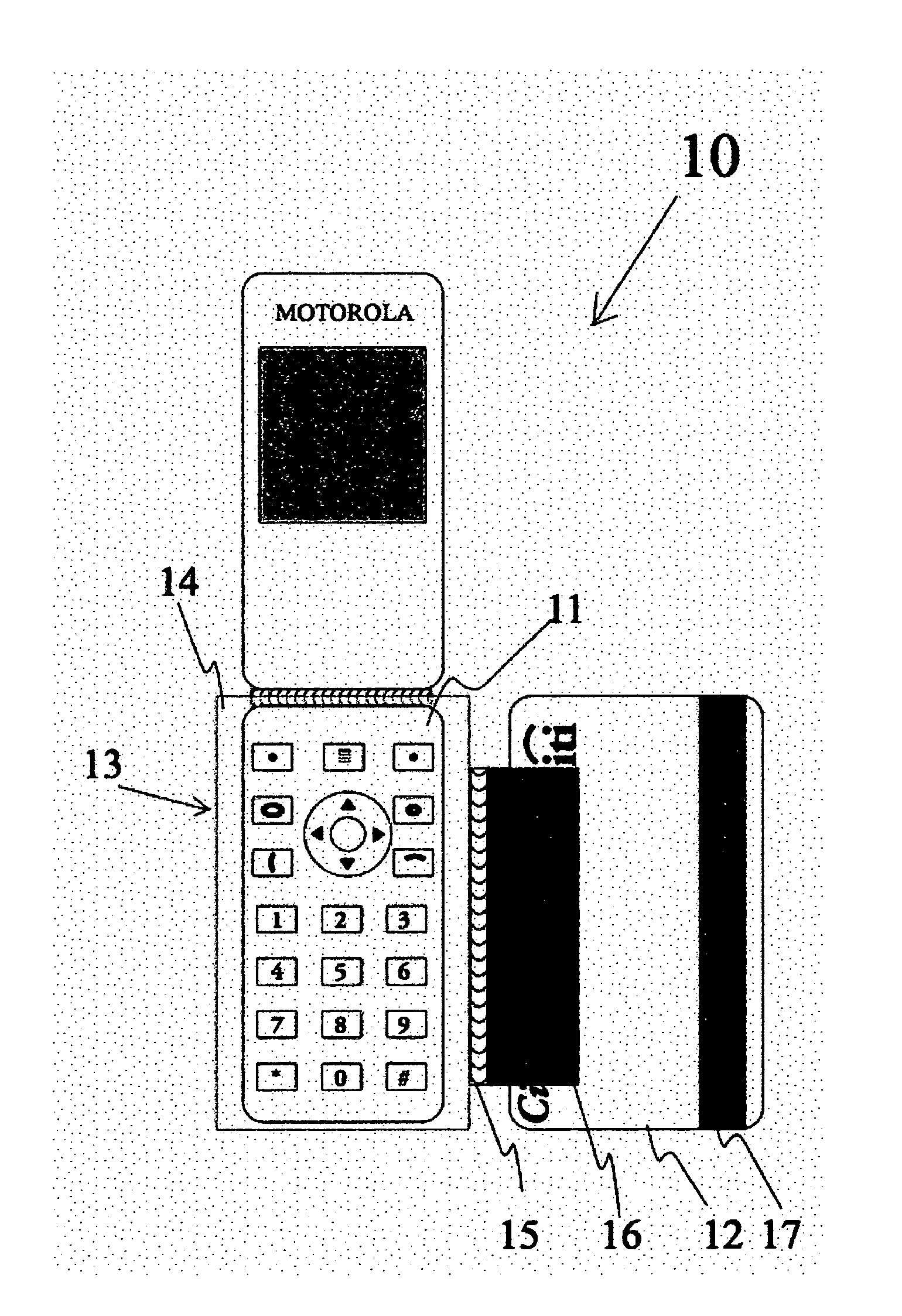Combined telephone and credit transaction enabler
a credit card and enabler technology, applied in the field of combined telephone and credit card enablers, can solve the problems of inability to secure credit card transactions with cell phones or pda technologies, slow development of retail electronic commerce, and the potential for fraud, and achieve the effect of preventing fraud and facilitating the expansion of retail electronic commer
- Summary
- Abstract
- Description
- Claims
- Application Information
AI Technical Summary
Benefits of technology
Problems solved by technology
Method used
Image
Examples
Embodiment Construction
[0033]The present invention relates to a unique attachment between a credit card to a cell phone; the attachment being such that the credit card is available for use in a credit card swiping machine. The cell phone back surface is attached to a two element hinged attachment device. The attachment device has two elements attached to each other by a hinge that permits angular movement between the elements. The first element of the attachment device is a plate that may be attached to the back side of the cell phone using a double sided tape or attachment clamps. The other element of the attachment device is a U shaped credit card retainer. The U shaped credit card retainer has rubberized parallel faces that apply compressive forces to the credit when the credit card is inserted into the U shaped slot.
[0034]The cell phone may be smaller or larger than the credit card. However, the plate element of the attachment is similarly sized to the credit card and prevents any bending of the credi...
PUM
 Login to View More
Login to View More Abstract
Description
Claims
Application Information
 Login to View More
Login to View More - R&D
- Intellectual Property
- Life Sciences
- Materials
- Tech Scout
- Unparalleled Data Quality
- Higher Quality Content
- 60% Fewer Hallucinations
Browse by: Latest US Patents, China's latest patents, Technical Efficacy Thesaurus, Application Domain, Technology Topic, Popular Technical Reports.
© 2025 PatSnap. All rights reserved.Legal|Privacy policy|Modern Slavery Act Transparency Statement|Sitemap|About US| Contact US: help@patsnap.com



